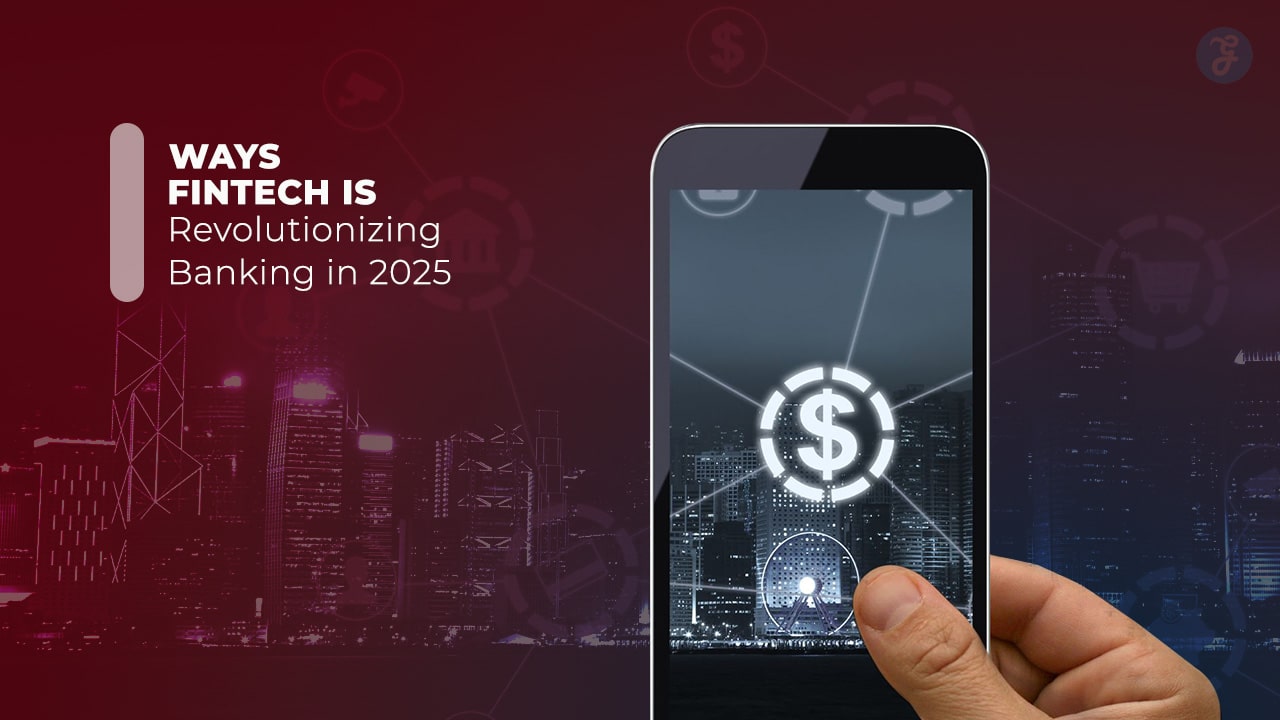Fintech is revolutionizing banking by introducing cutting-edge technologies that are transforming how consumers and businesses interact with financial institutions. In the rapidly evolving world of finance, fintech is shaping a more efficient, secure, and accessible future for banking.
By harnessing innovations like AI, blockchain, mobile-first solutions, and more, fintech is paving the way for a new era in banking. As we move into 2025, fintech is set to continue reshaping the financial landscape, offering unprecedented benefits to consumers and institutions alike.
In this article, we will explore 10 key ways fintech is revolutionizing banking, providing actionable insights, industry examples, and real-time statistics that showcase the ongoing impact of fintech on the financial services industry.
1. Digital Banking and Mobile-First Solutions
Mobile Banking Growth: How Fintech Is Revolutionizing Banking Access
Fintech is revolutionizing banking by making it more accessible and convenient through mobile-first solutions. Mobile banking allows consumers to manage their finances from anywhere at any time, making banking more flexible and user-friendly.
As smartphone use continues to rise globally, more people are relying on mobile banking apps to perform everyday banking tasks like checking balances, making transfers, and paying bills.
By 2025, mobile banking is projected to be used by more than 2.5 billion people worldwide. This shift is not just a trend but a fundamental transformation in how banking services are delivered. Fintech is revolutionizing banking by enabling a shift from physical bank branches to digital platforms that provide on-demand services.
Actionable Tip:
Maximize your banking experience by fully exploring your mobile app—ensure you’re using features like real-time notifications, budgeting tools, and mobile transfers to streamline your finances.
Increased Accessibility with Digital-Only Banks
Digital-only banks, also known as neobanks, are part of the fintech revolution, offering a new and innovative way to bank. These banks operate entirely online, providing customers with access to banking services without the need for physical branches. Fintech is revolutionizing banking by offering low-fee, mobile-first solutions that cater to tech-savvy customers who prefer banking on their terms.
Real-Life Example:
Chime, a digital-only bank, has grown rapidly by offering its customers fee-free checking accounts and easy access to financial services. By removing the traditional overhead costs of maintaining physical branches, Chime provides a more cost-effective and accessible banking option for millions of people.
2. AI and Machine Learning in Banking
Personalized Banking Experiences: Fintech Is Revolutionizing Customer Engagement
Artificial intelligence (AI) and machine learning are at the forefront of the fintech revolution in banking, enabling banks to offer highly personalized services. By analyzing transaction data and consumer behavior, banks can tailor their products to suit the unique needs of each customer. This data-driven approach helps banks deliver customized financial advice, investment recommendations, and loan offers.
With AI, fintech is revolutionizing banking by improving decision-making processes, reducing human error, and delivering more personalized, customer-centric services.
Actionable Tip:
Use AI-powered budgeting tools to get tailored financial advice. Many fintech apps now offer AI-based insights that can help you manage your spending and create a savings plan that fits your financial goals.
Enhanced Fraud Detection and Security
AI’s impact on banking security cannot be overstated. Fintech is revolutionizing banking by using AI and machine learning to enhance fraud detection and reduce risk. By analyzing transaction patterns and identifying anomalies, AI can detect potential fraud before it happens, helping banks protect their customers’ assets and personal data.
Real-Life Example:
JP Morgan Chase has successfully integrated AI into its fraud detection systems, helping to identify suspicious transactions and prevent fraud in real-time. This system continuously monitors transactions, flagging anything that deviates from normal patterns, thereby reducing the risk of fraudulent activity.
3. Blockchain and Cryptocurrency Integration
Blockchain: Fintech Is Revolutionizing Banking with Secure Transactions
Blockchain technology is one of the most transformative innovations in the fintech space. It provides a decentralized, secure, and transparent way of conducting transactions. Fintech is revolutionizing banking by using blockchain to improve the speed and efficiency of cross-border payments, reduce transaction costs, and enhance security.
Blockchain’s immutable nature ensures that once a transaction is recorded, it cannot be altered, making it highly secure. Banks are adopting blockchain to streamline operations, increase transparency, and eliminate intermediaries in financial transactions.
Actionable Tip:
Start exploring blockchain-based platforms for faster, more secure transactions. Many fintech platforms now integrate blockchain to facilitate secure cross-border payments and smart contracts.
Real-Life Example:
Santander has integrated blockchain into its payment services, allowing for faster and more affordable international money transfers. This integration demonstrates how fintech is revolutionizing banking by enhancing the way money is exchanged across borders.
The Rise of Cryptocurrencies in Banking
Cryptocurrencies have become an integral part of the fintech ecosystem, and fintech is revolutionizing banking by incorporating digital currencies into traditional financial systems. Leading banks and financial institutions are now offering cryptocurrency-related services, such as cryptocurrency custody, trading, and lending, to cater to the growing demand for digital assets.
Real-Life Example:
JPMorgan Chase has launched its cryptocurrency, JPM Coin, which facilitates secure, real-time cross-border payments for institutional clients. This innovative step highlights how fintech and traditional banking are working together to accommodate the rise of digital currencies.
4. Open Banking and API Connectivity
Facilitating Seamless Payments: How Open Banking Is Revolutionizing Banking
Open banking is another area where fintech is revolutionizing banking. By opening up bank data to third-party developers via secure APIs, open banking allows customers to access a wide range of financial services from different providers in one place. This increased connectivity facilitates seamless payments, investment opportunities, and loan management, making financial services more integrated and accessible.
Actionable Tip:
Leverage open banking platforms to compare financial products and manage multiple accounts in one place. Open banking can help you find the best rates on savings accounts, loans, and insurance by providing more transparency across financial providers.
Enhancing Customer Choice and Flexibility
Open banking is reshaping the customer experience by giving consumers more control over their financial decisions. Through open APIs, fintech is revolutionizing banking by allowing customers to compare and choose the best financial products, from savings accounts to credit cards, based on their needs.
Real-Life Example:
Plaid, a leading fintech company, has integrated with over 11,000 financial institutions, enabling users to access and manage their bank accounts, loans, and investments through a single platform. This level of integration enhances financial choice and transparency, giving customers more power to manage their finances.
5. Digital Wallets and Contactless Payments
The Shift to Cashless Transactions: Fintech Is Revolutionizing Banking with Digital Wallets
The rise of digital wallets and contactless payments is another major way fintech is revolutionizing banking. With digital wallets like Apple Pay, Google Pay, and Samsung Pay, consumers can now make payments with a tap of their phone, without the need for physical cards. The adoption of Near Field Communication (NFC) technology has made this possible, providing a secure, fast, and frictionless payment method.
Actionable Tip:
Start using digital wallets for everyday purchases to take advantage of the convenience and security they offer. Many digital wallets now also allow you to store loyalty cards, making them even more useful.
NFC Technology for Seamless Payments
Near Field Communication (NFC) technology is the backbone of contactless payments, and fintech is revolutionizing banking by making NFC-enabled payments mainstream. With NFC, customers can tap their phones or wearables on payment terminals to complete transactions quickly and securely, enhancing the customer experience while reducing checkout time.
Real-Life Example:
Starbucks has integrated NFC technology into its app, allowing customers to pay for coffee with just a tap. This innovative feature provides a faster and more convenient payment experience, making fintech revolutionize banking by enhancing everyday transactions.
6. Robotic Process Automation (RPA) in Banking Operations
Streamlining Banking Operations: Fintech Is Revolutionizing Efficiency
Robotic Process Automation (RPA) is helping banks improve operational efficiency by automating repetitive, time-consuming tasks. From customer service to data entry, RPA reduces the need for manual intervention, allowing banks to operate more quickly and efficiently. This automation also minimizes human errors, reducing operational costs and improving service quality.
Actionable Tip:
Inquire about banks that use RPA to streamline processes such as account opening, loan approvals, and customer service requests. Automated systems can speed up service and reduce errors, improving your overall banking experience.
Real-Life Example:
Deutsche Bank has implemented RPA to automate compliance tasks, reducing the time it takes to process regulatory filings from days to hours. This efficiency improvement demonstrates how fintech is revolutionizing banking through automation.
| Metric | Data |
| RPA cost savings | Up to 30% reduction in operational costs |
| Banks adopting RPA | 50% of major banks |
| RPA efficiency gains | 70% faster transaction processing |
Takeaways
As we’ve explored throughout this article, fintech is revolutionizing banking in profound ways, from digital-first banking experiences and AI-driven personalization to blockchain technology and open banking. Each of these innovations is making banking more accessible, secure, and efficient for consumers and businesses alike.
The future of banking is bright, with fintech continuing to drive change and create new opportunities for both financial institutions and their customers. By embracing these cutting-edge technologies, consumers can benefit from more tailored financial products, better security, and greater control over their financial lives.
Whether you’re a consumer, entrepreneur, or professional in the finance sector, staying informed about how fintech is revolutionizing banking will help you navigate and thrive in the evolving financial landscape.





































